From the Dead Sea we returned to Amman the capital of Jordan. We meet our niece Cara who has been living in Amman. She was able to join us for the last two days of our tour. That afternoon we visited the city of Jerash just 30 miles north of Amman. It lies in a remote fertile valley about 900 ft above sea level. With a natural source of water and an ideal climate the area is known for growing a wide variety of crops.
Jerash was first inhabited in 3200 BC. Alexander the Great developed it into a thriving city around 300 BC. Like Petra during this same time Jerash became a stop on the incense and spice trade routes from the Arabian Peninsula. In the 1st century AD the city achieved great prosperity.
Today it is considered one of the largest, most important and best preserved Roman city outside of Italy. Hidden for centuries in sand before being restored it still displays fine examples of grand Roman urbanism. Paved streets, spacious public squares, colonnaded streets, theaters, plazas, gates, city walls, temples all in exceptional condition. Jerash is the second most visited place after Petra.
A strong earthquake in 749 AD destroyed most of the city. It went into decline with the turmoil during the Crusades that followed. The city was abandoned and buried with sand until it was rediscovered in 1806 by a German explorer. Which explains why it is so remarkable preserved. After the tour of Jerash our driver took us to a restaurant high up in the hills outside of town where we enjoyed a wonderful view of the countryside.

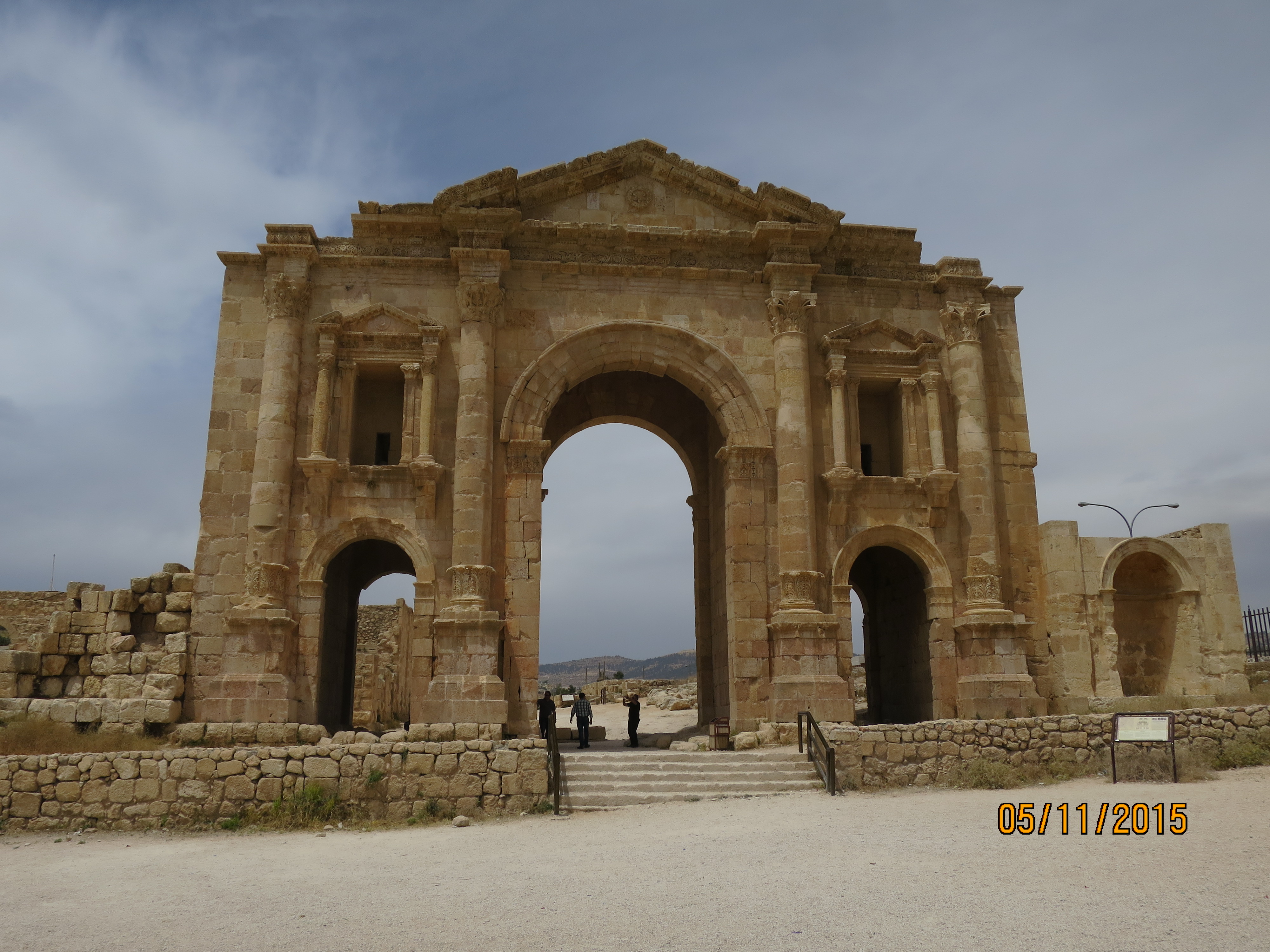
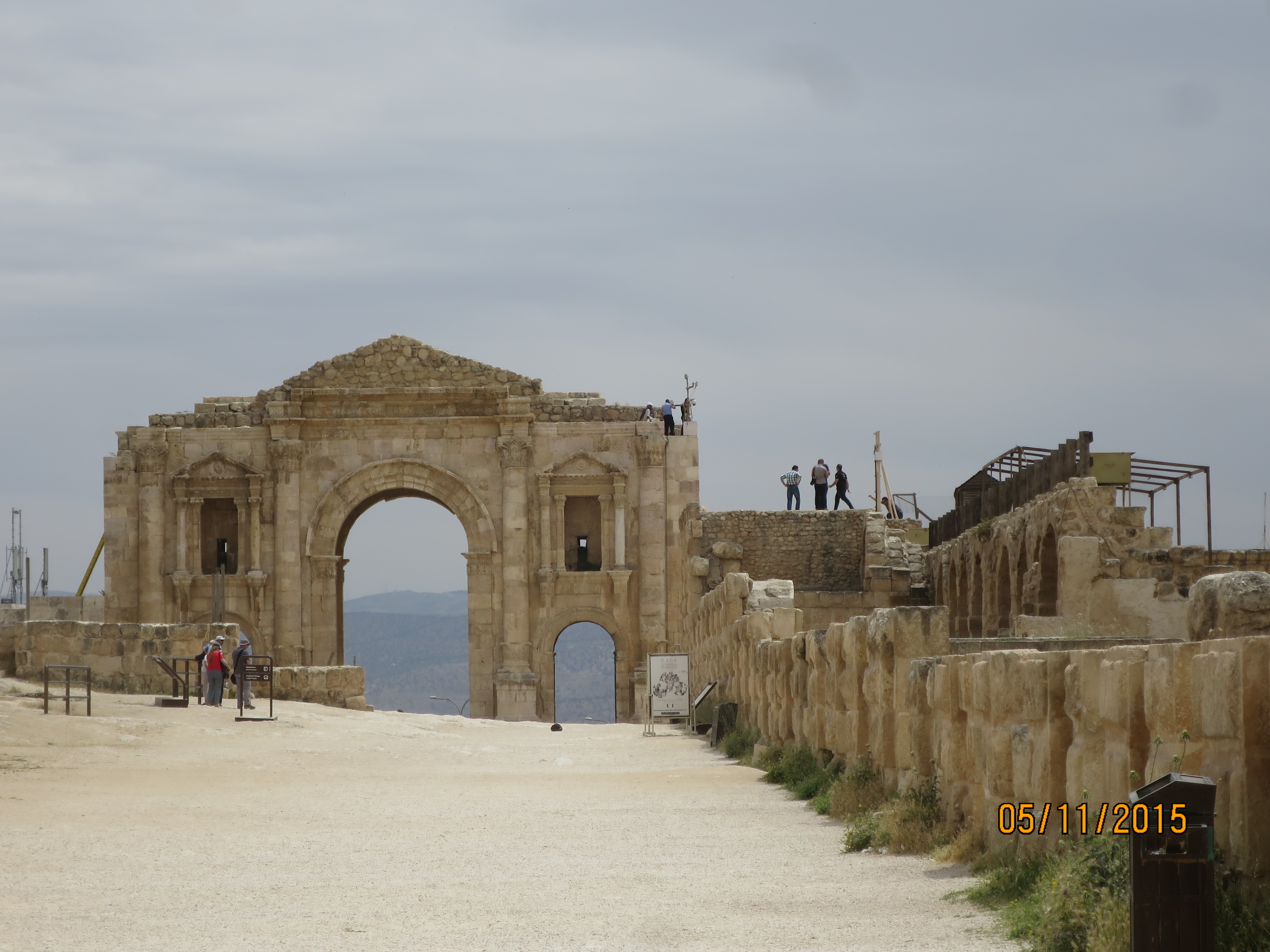
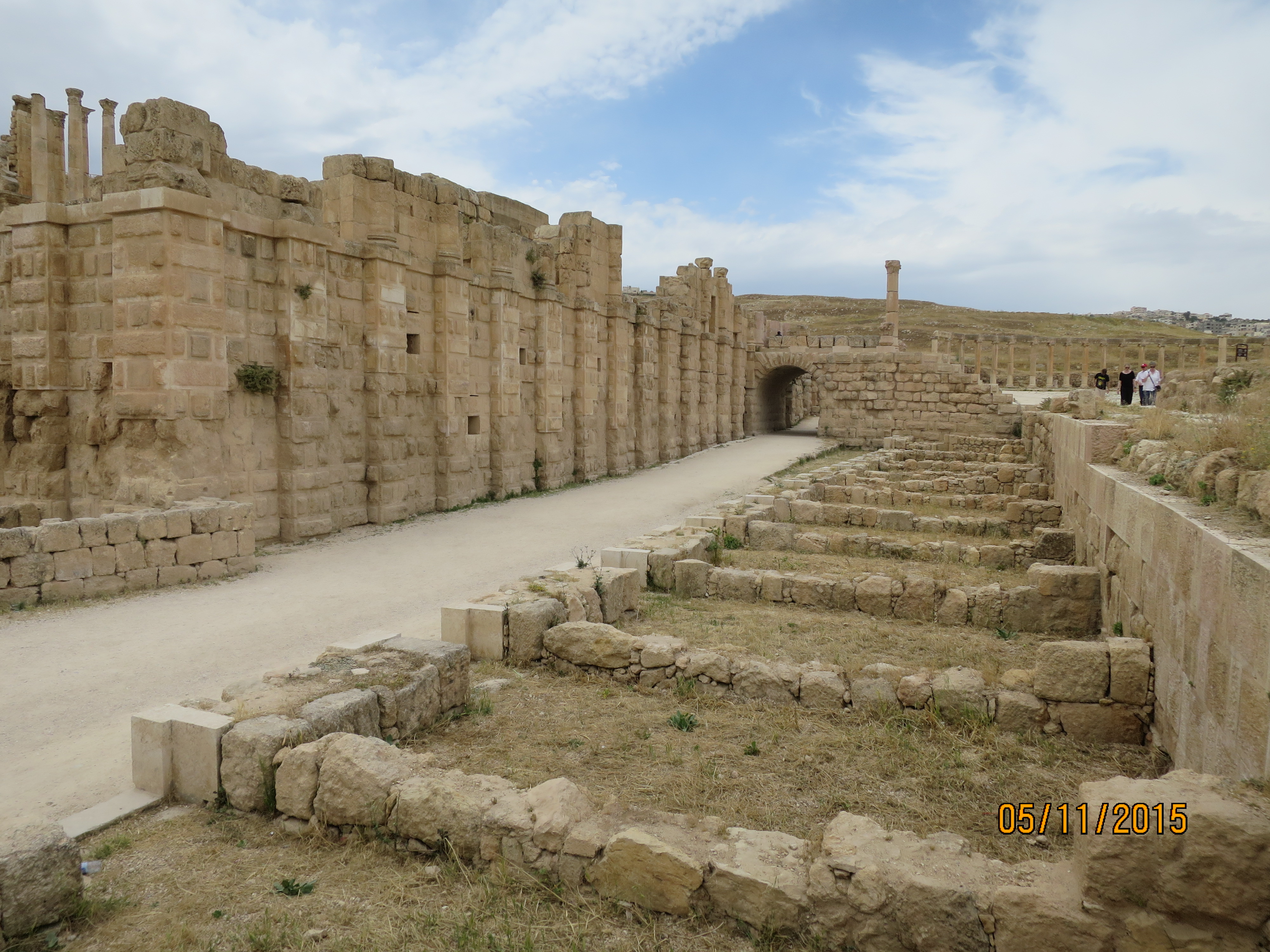
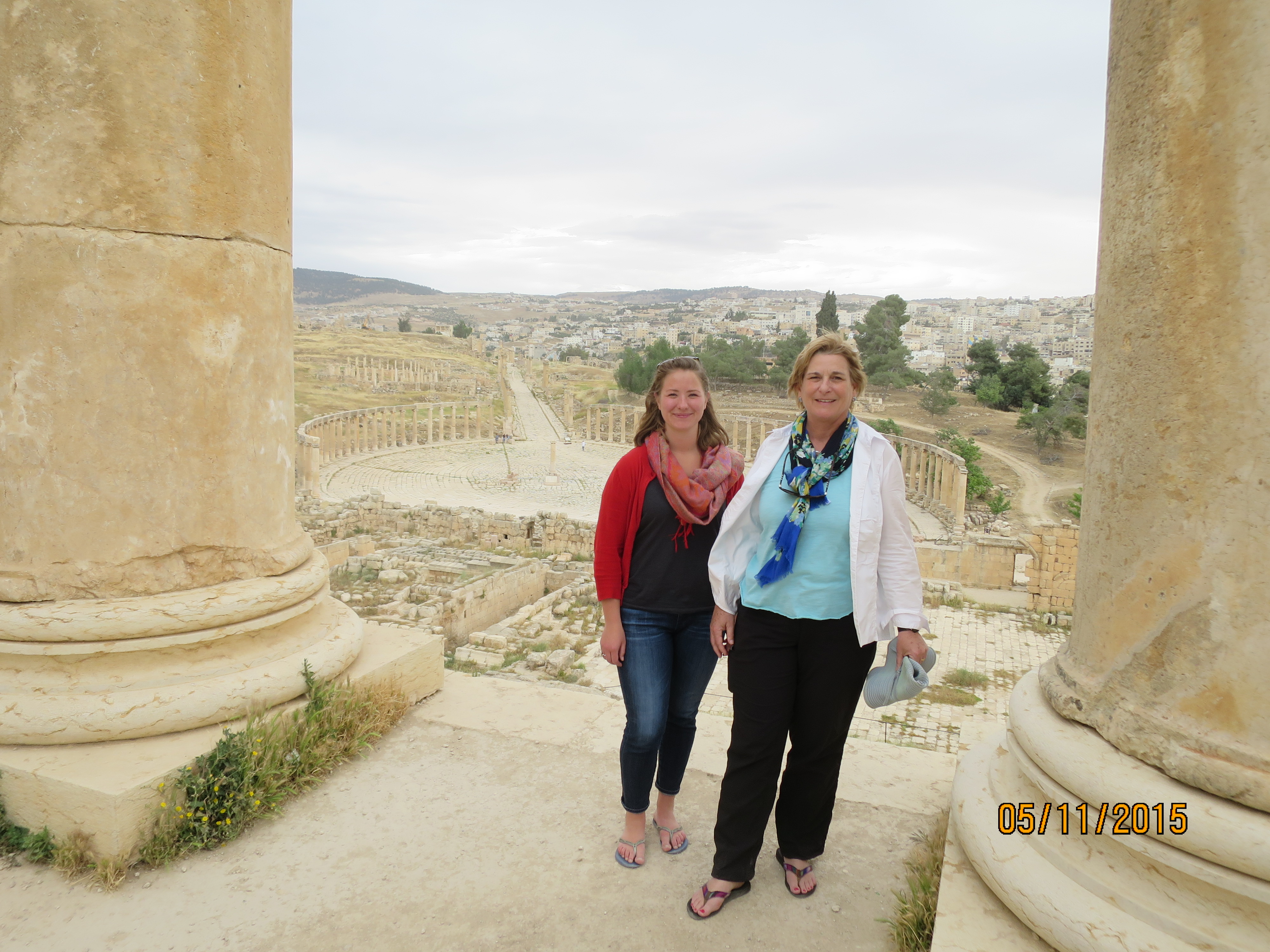
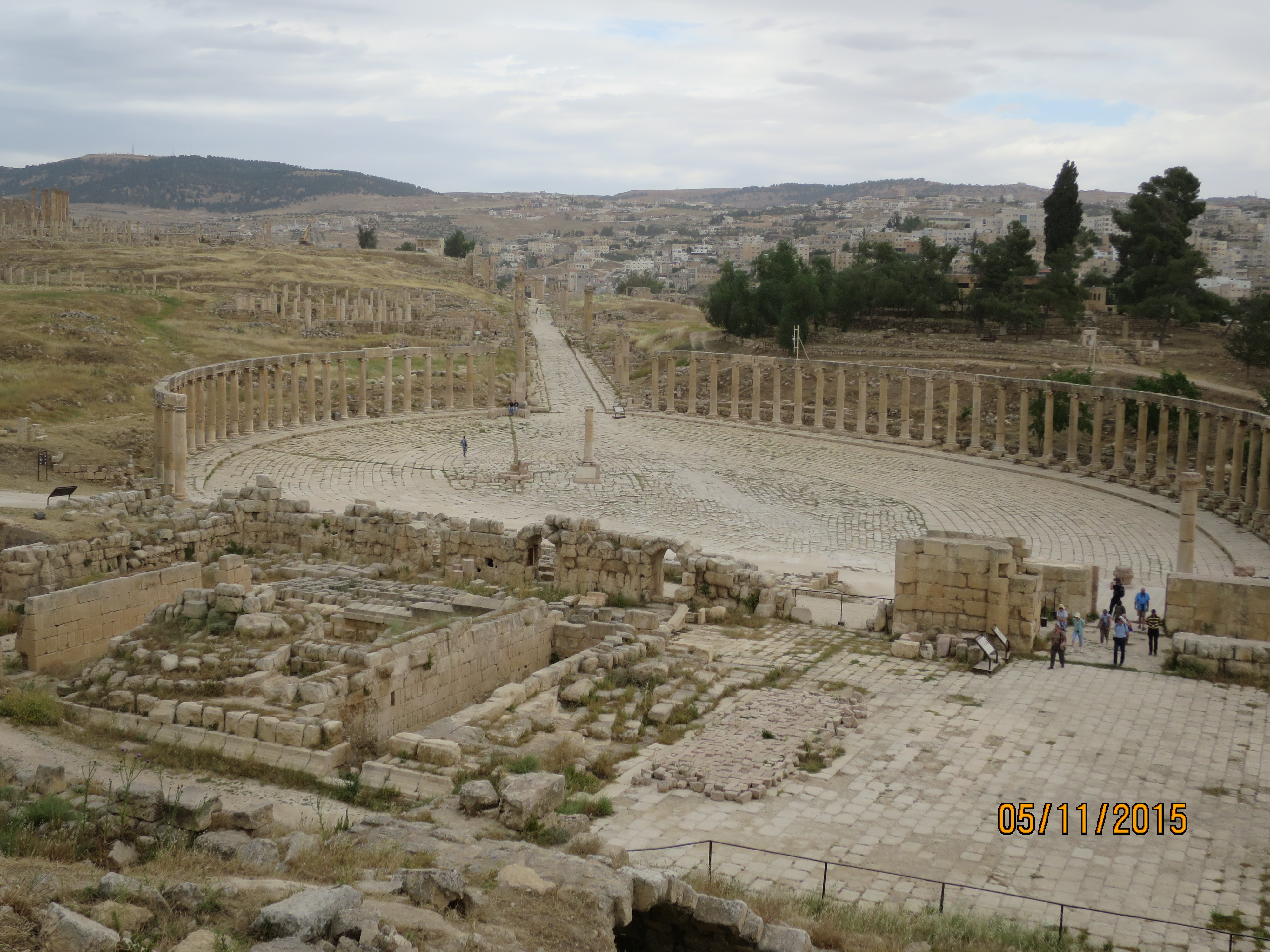
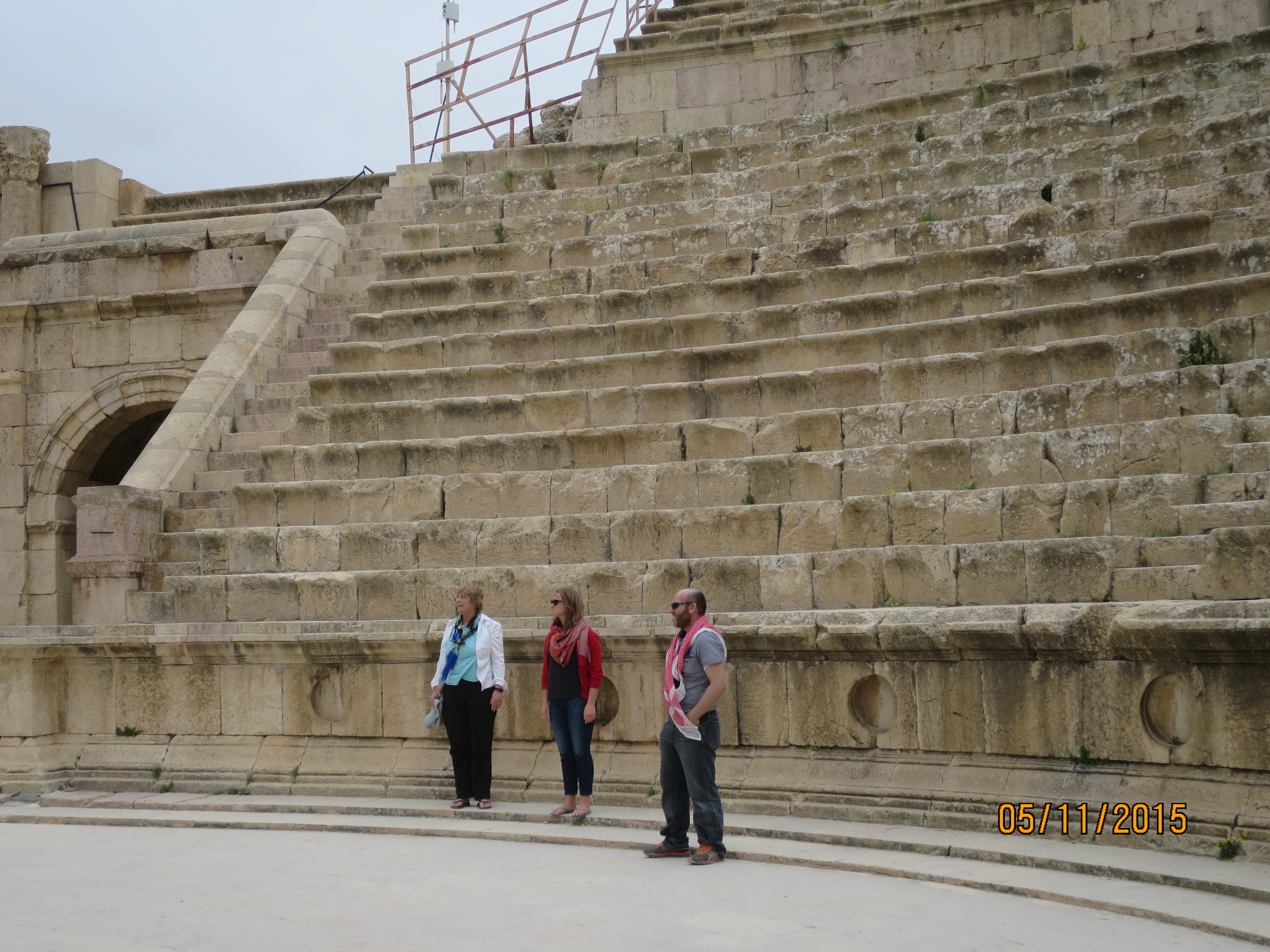
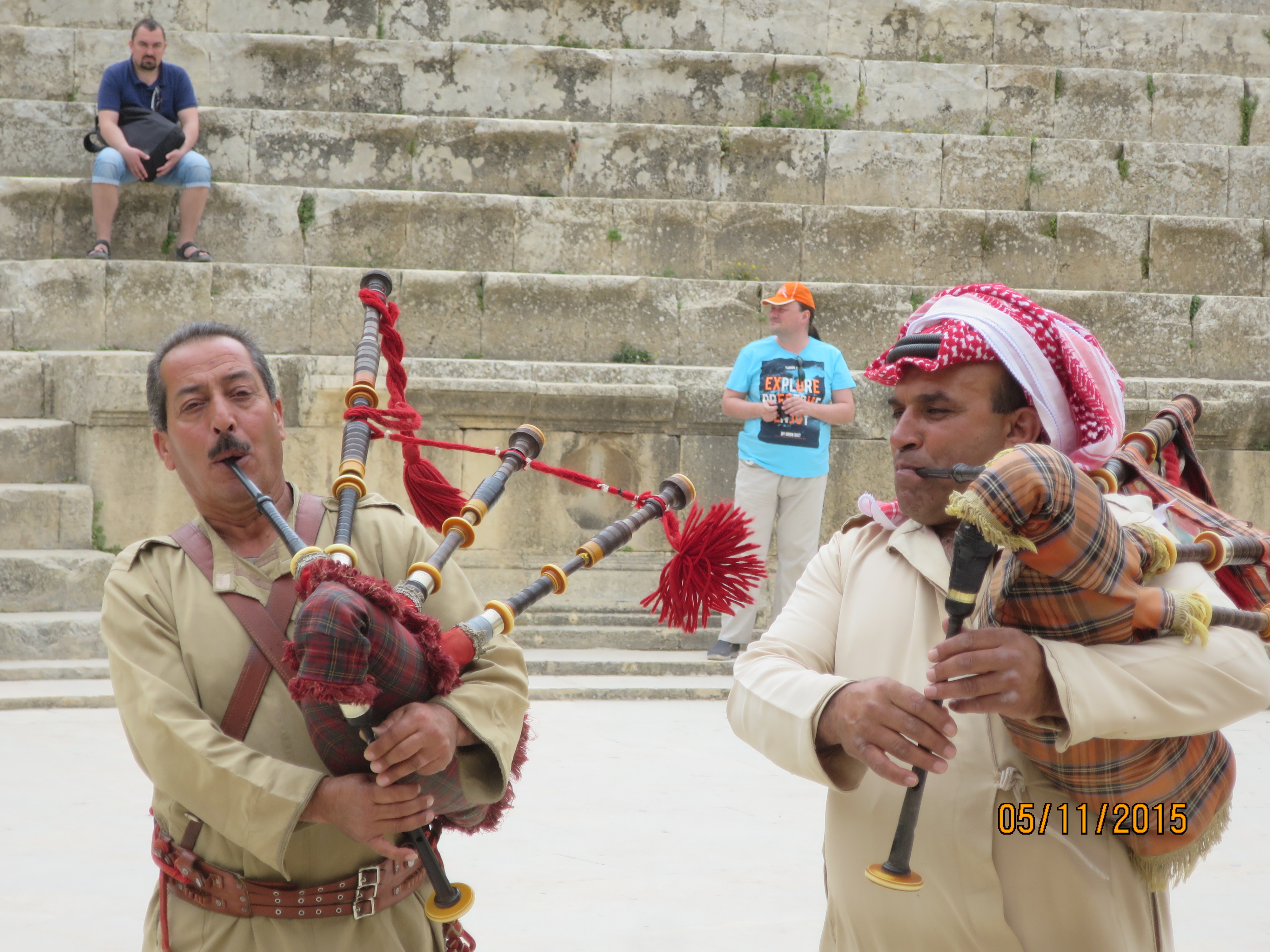
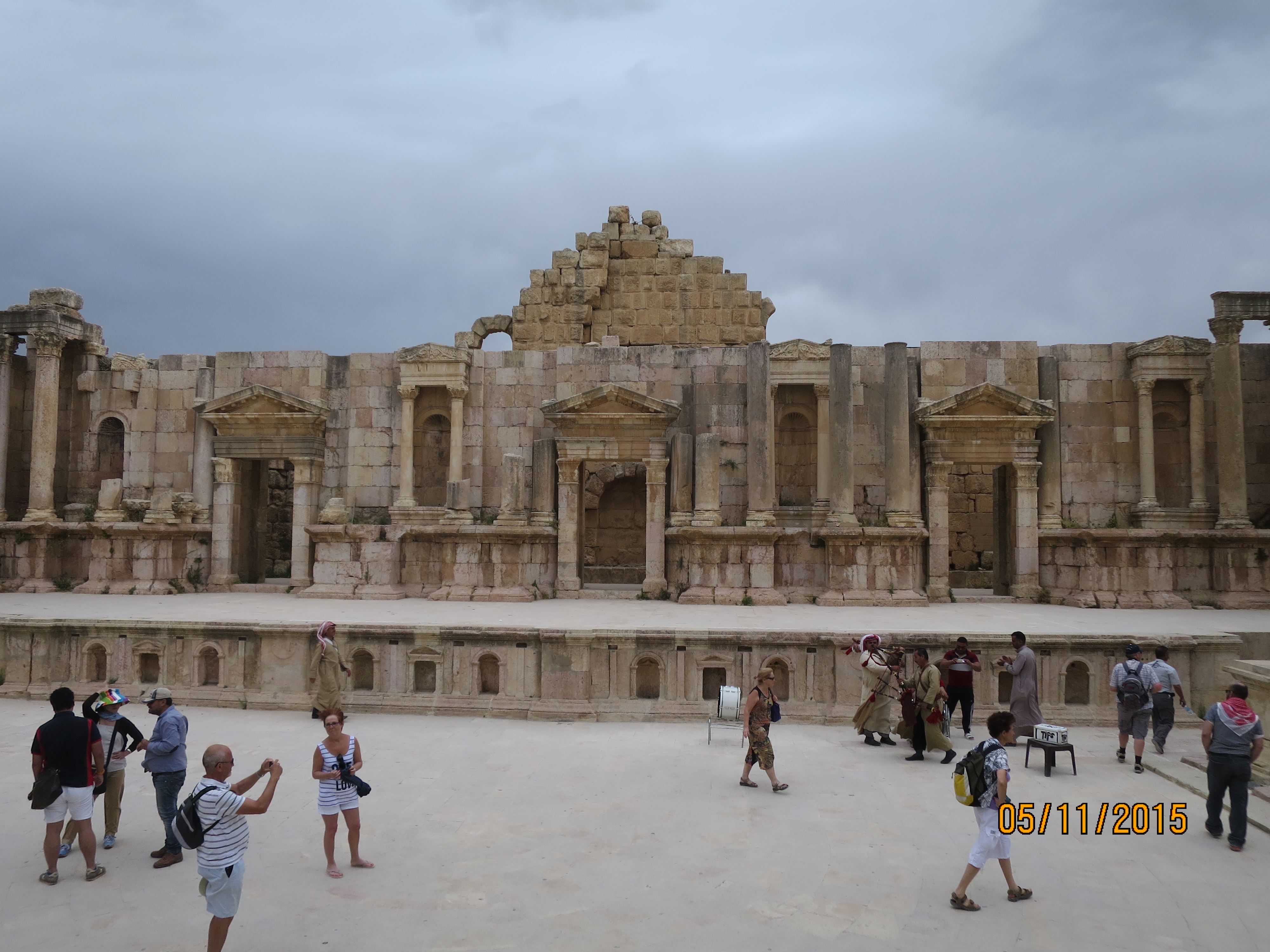
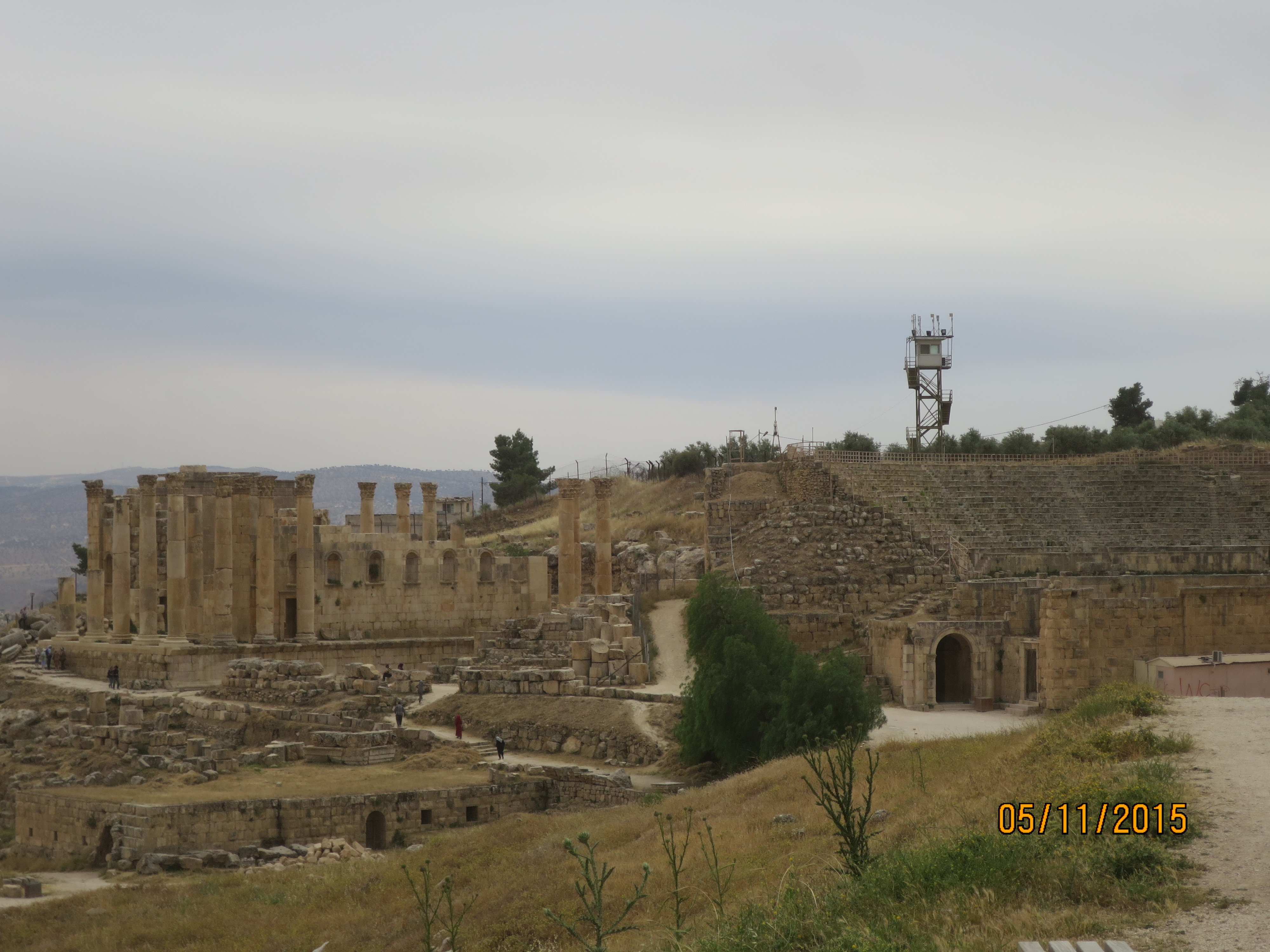
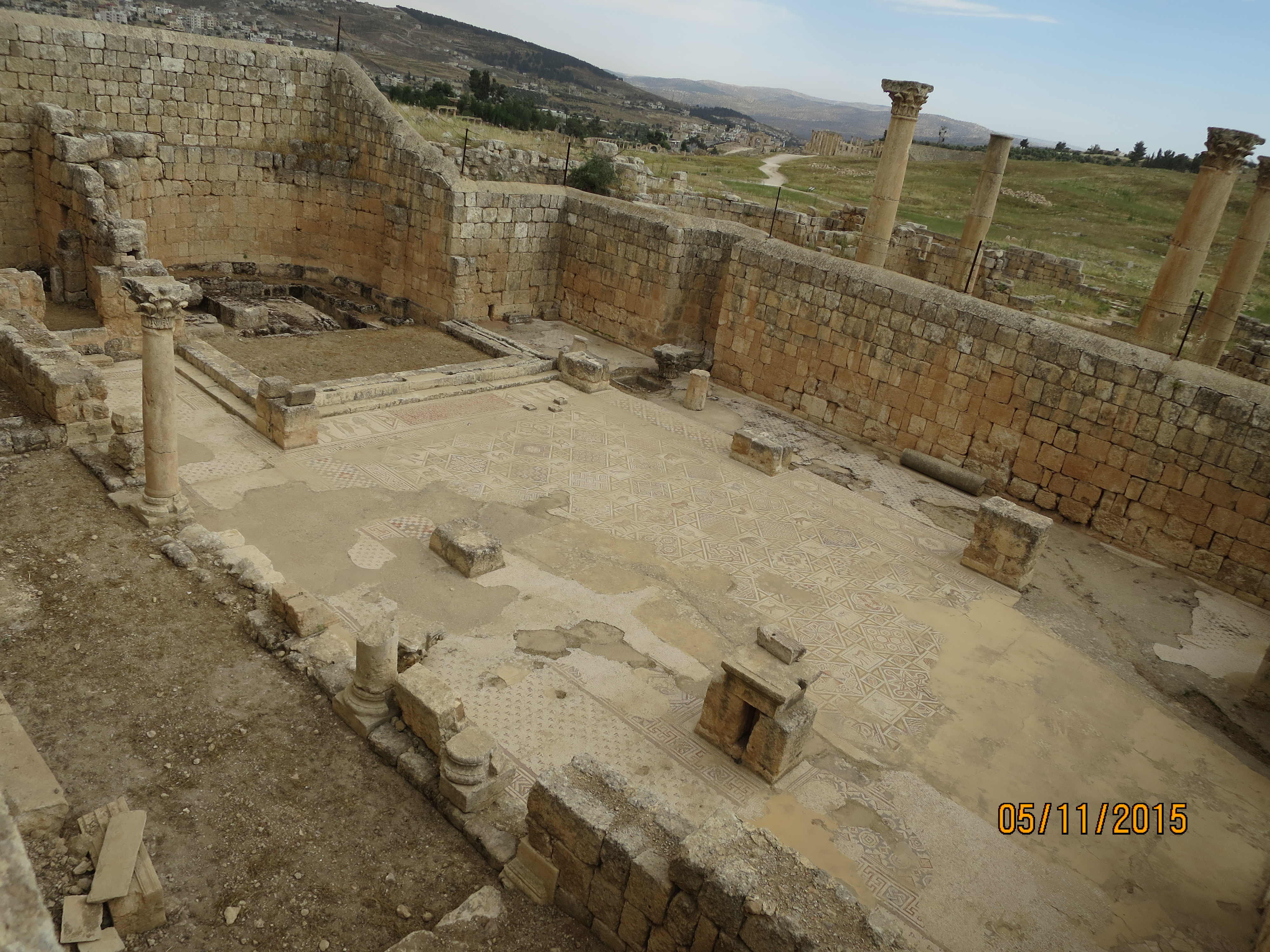
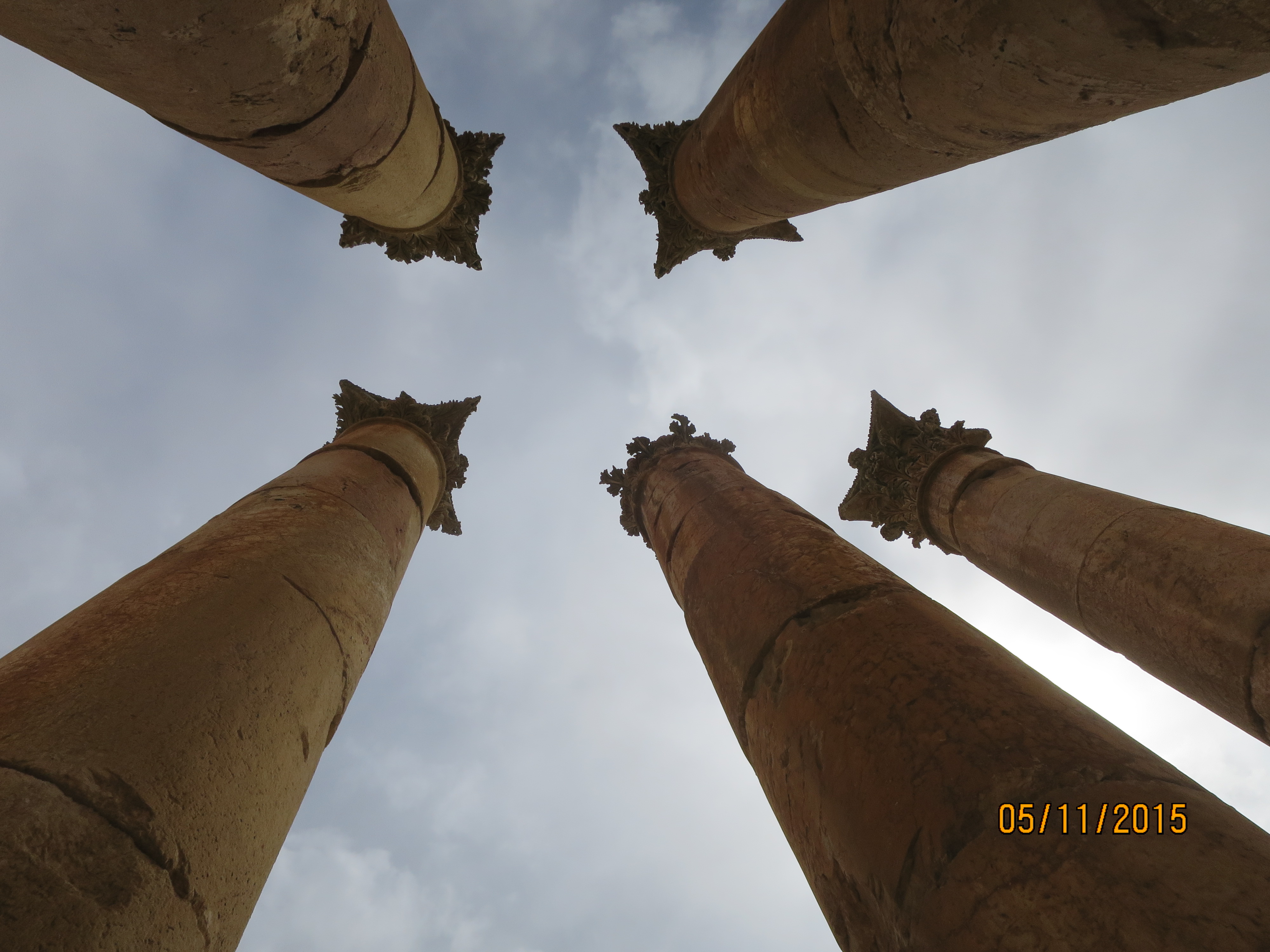
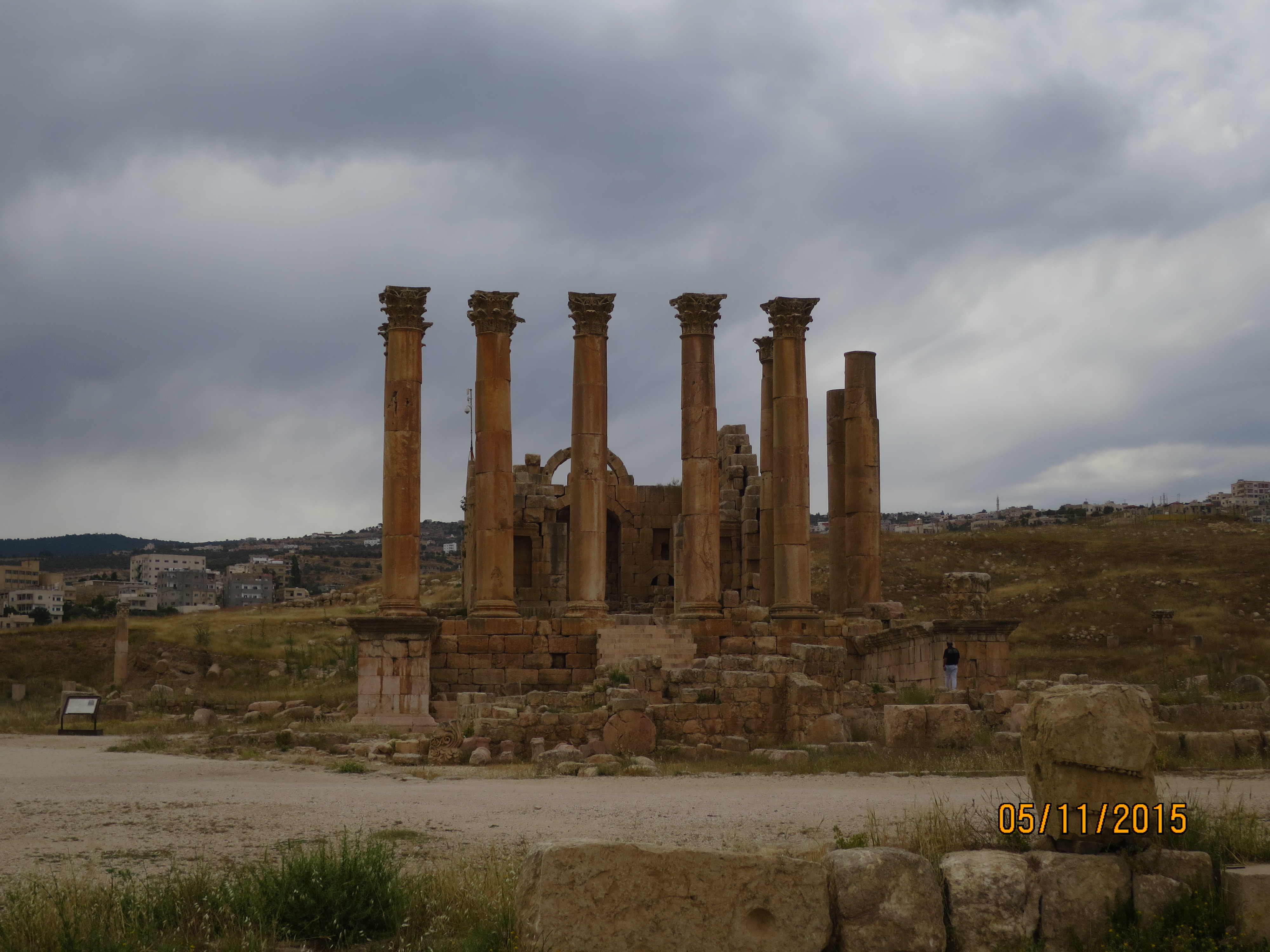
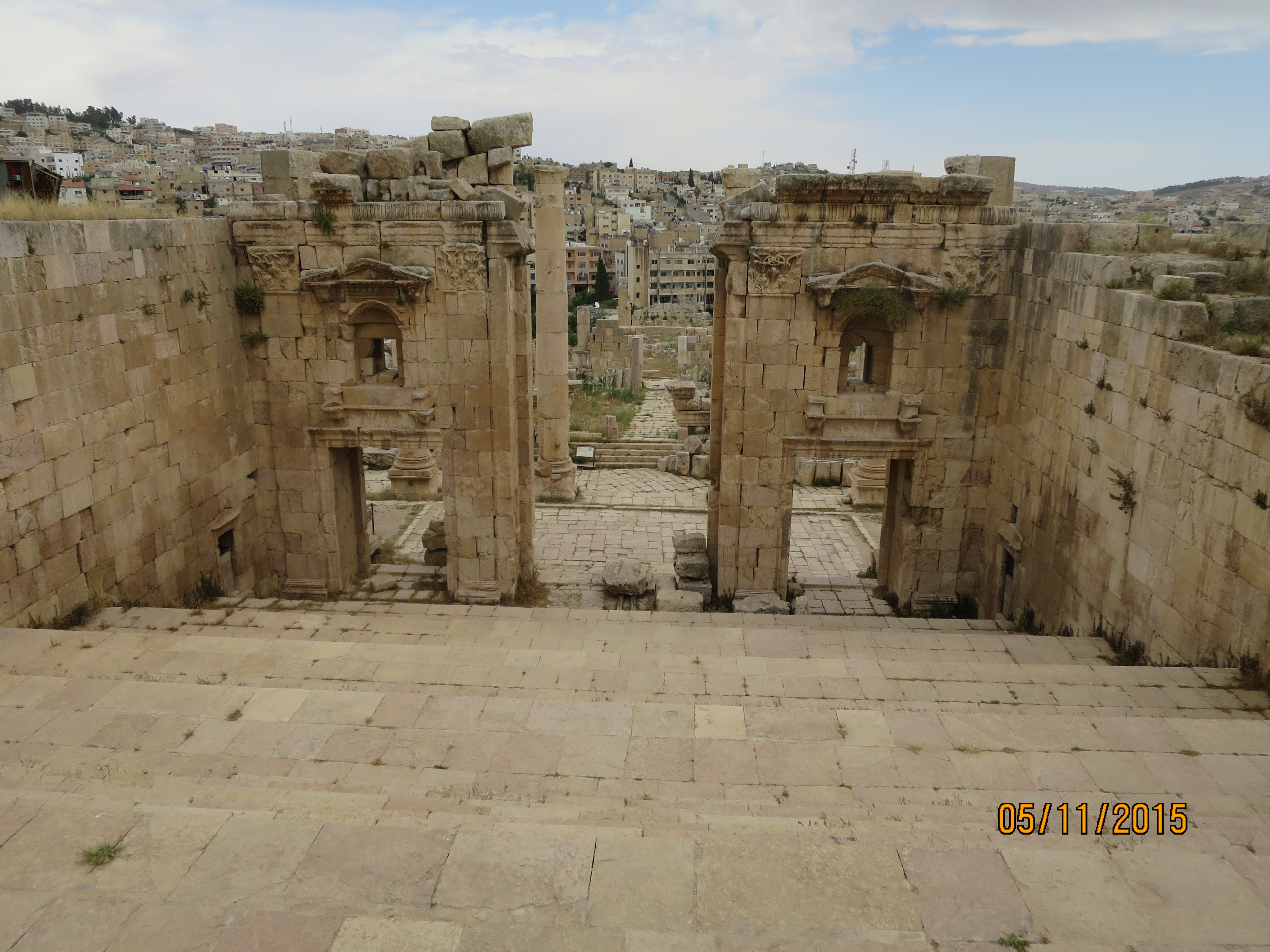
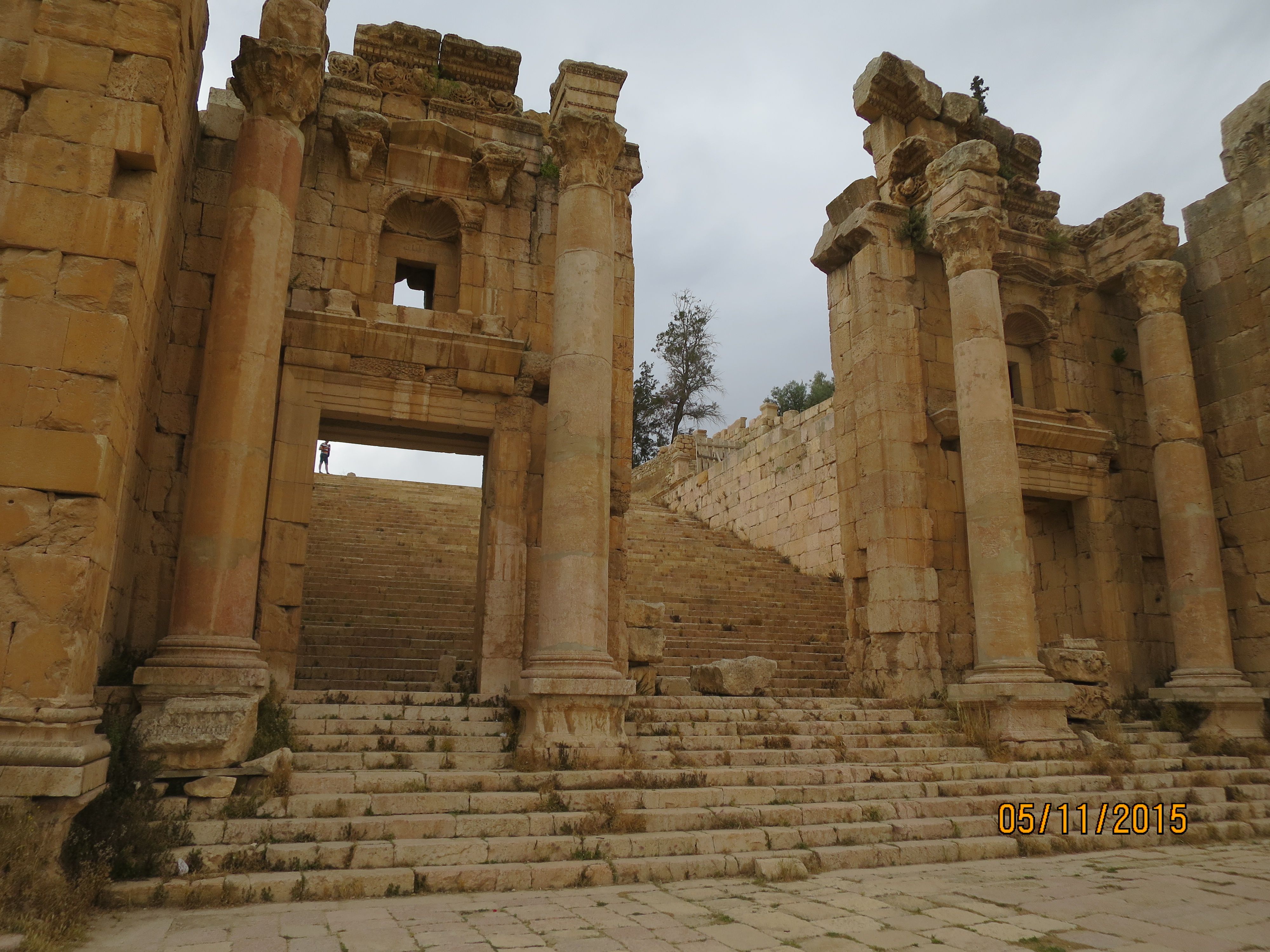
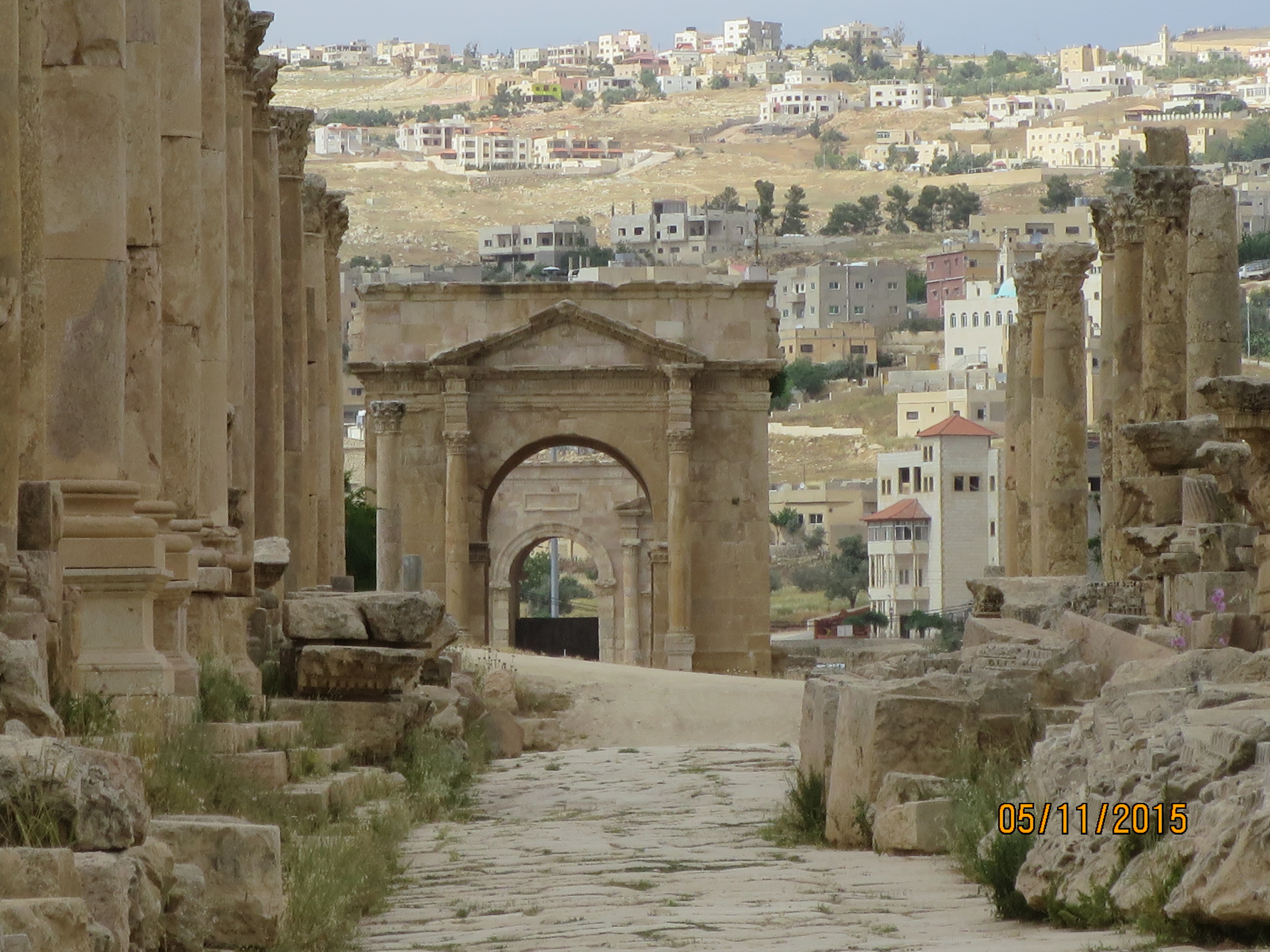
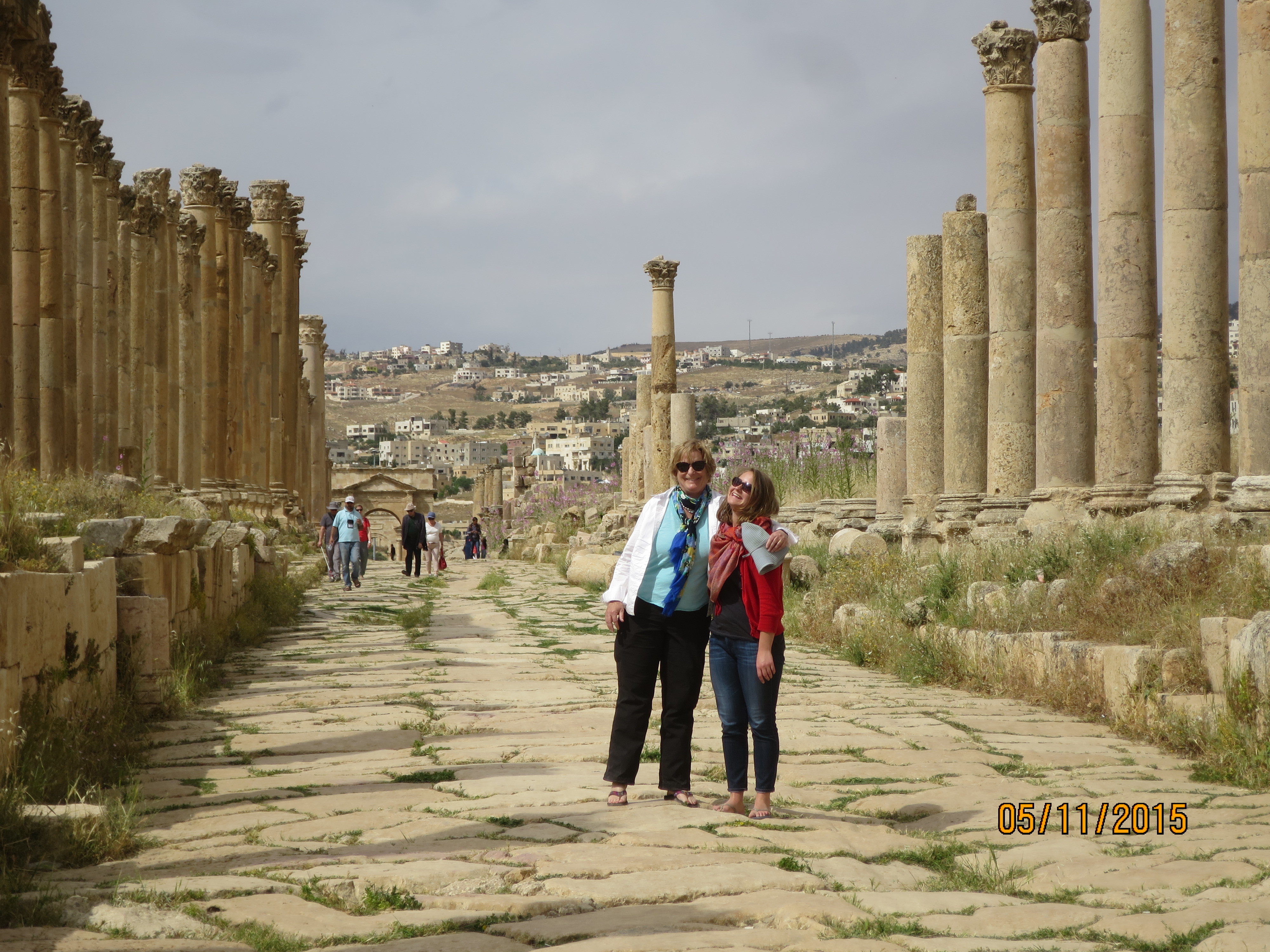
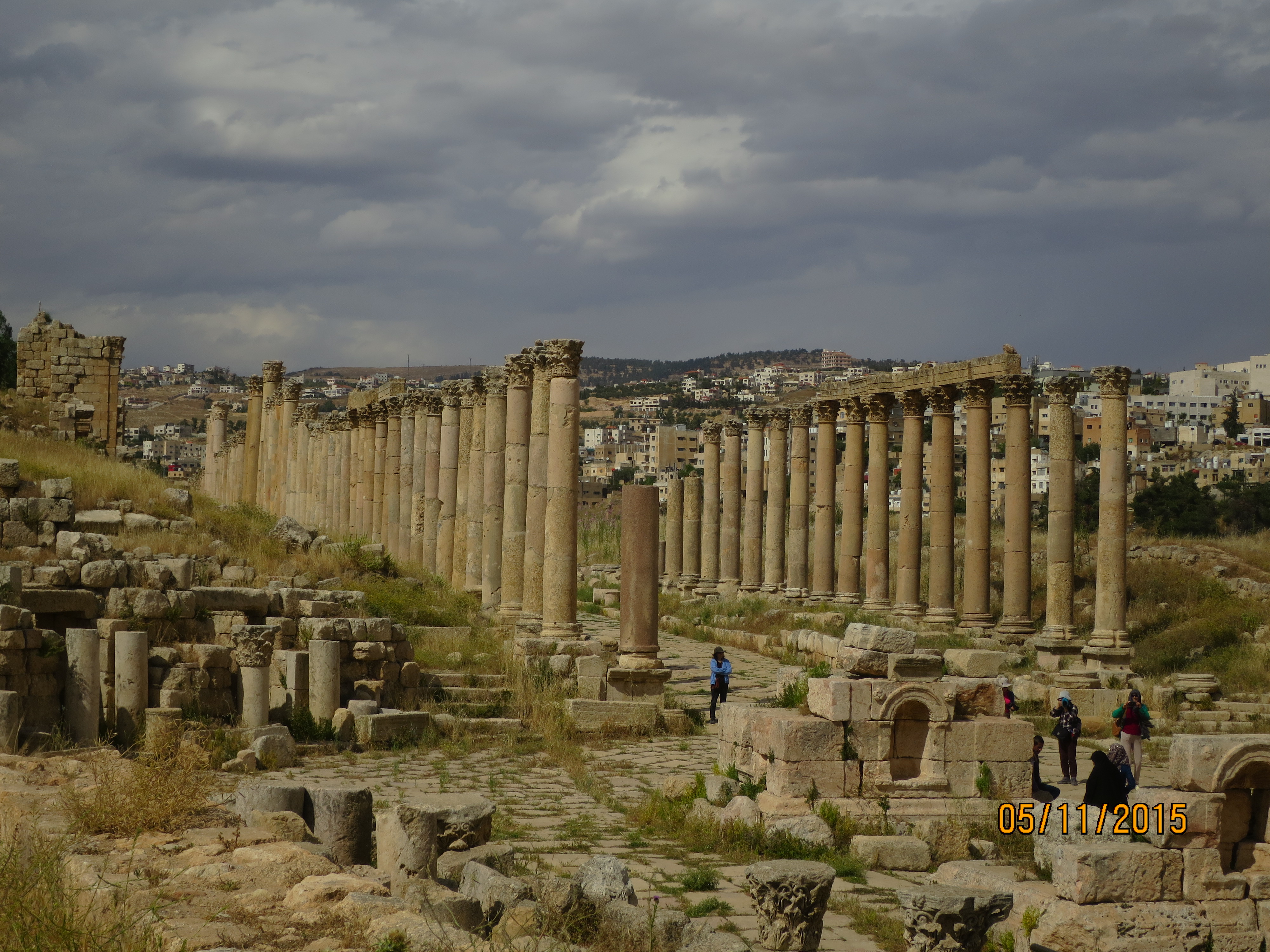
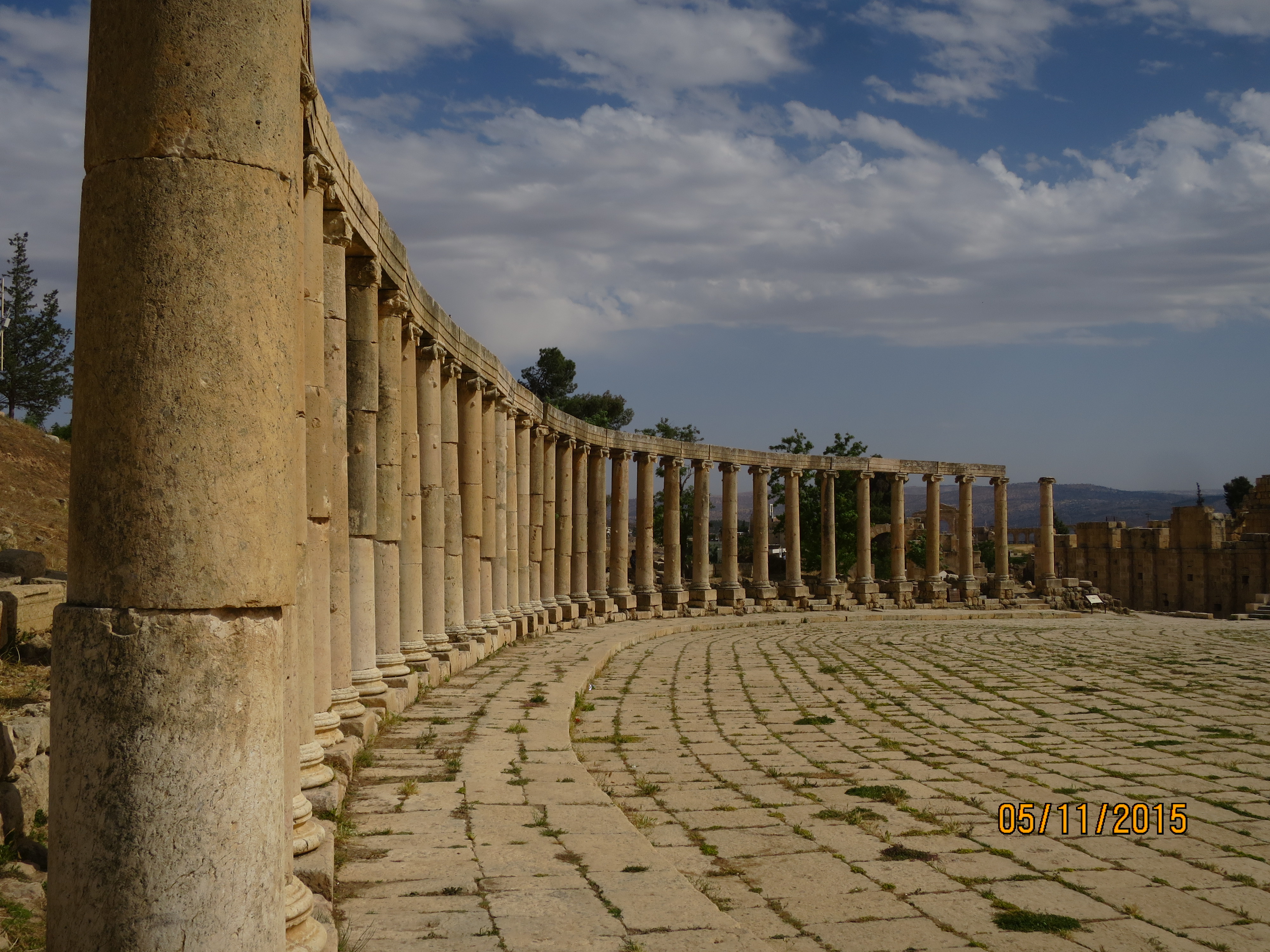
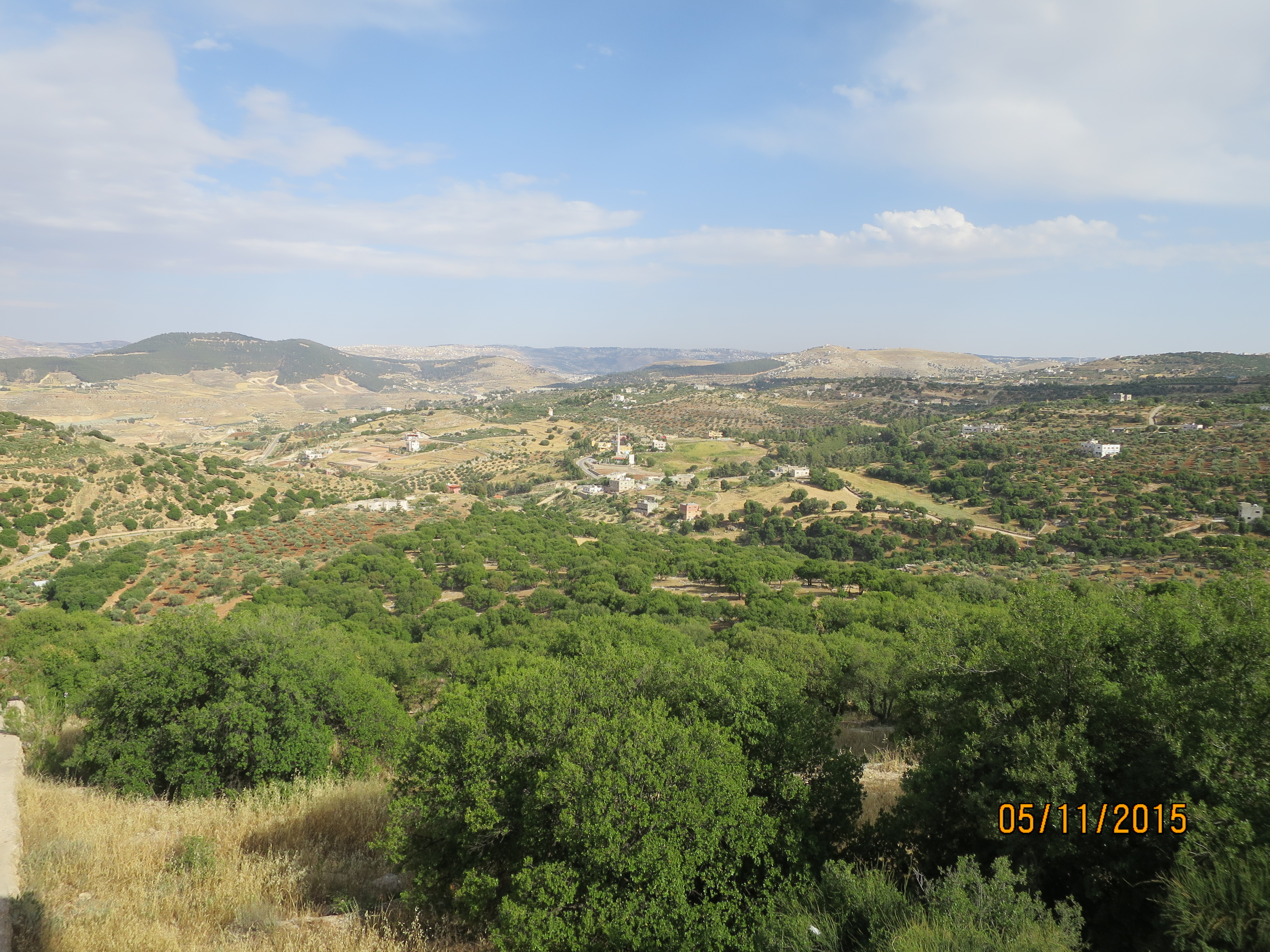
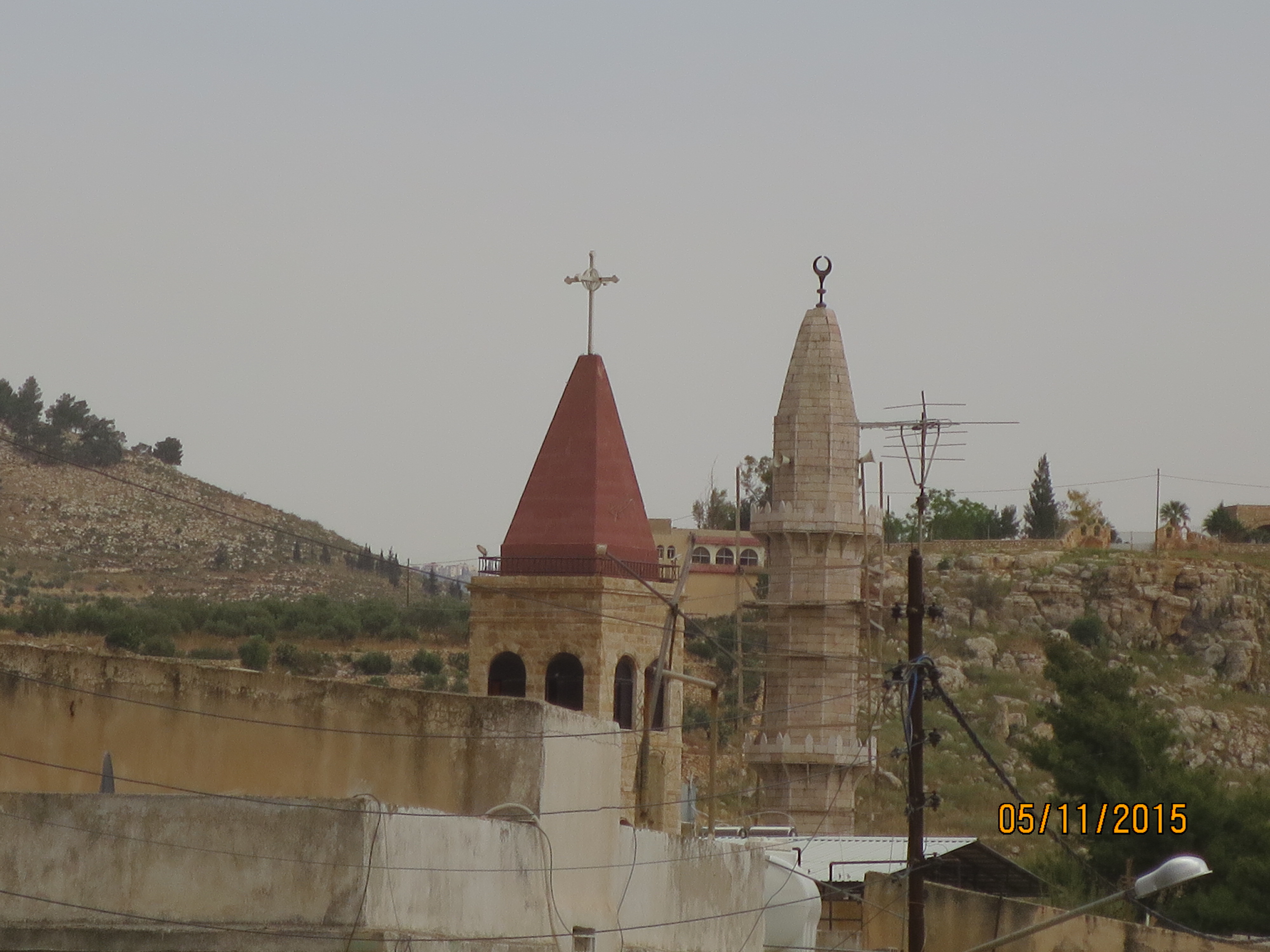
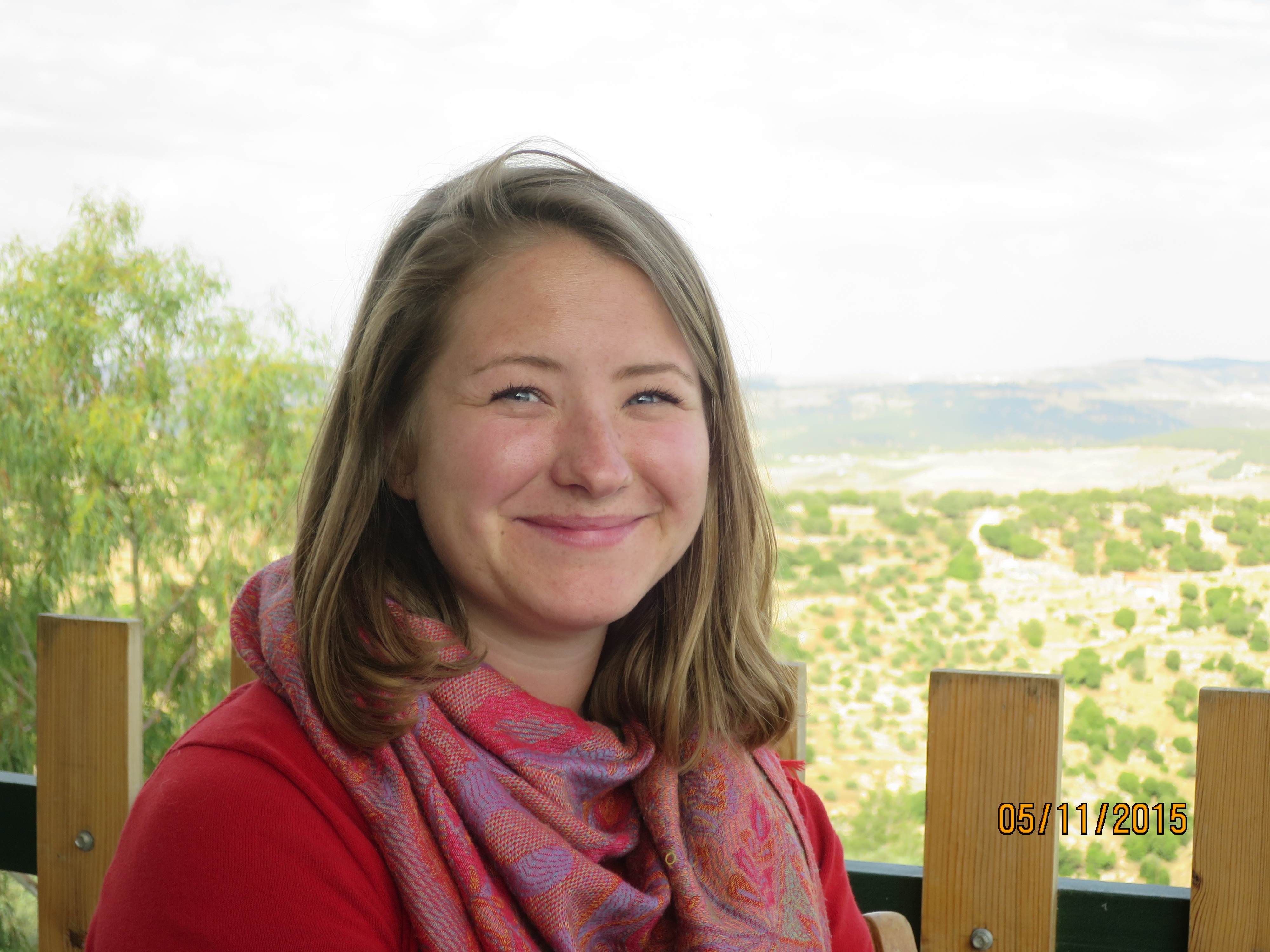
Once again, amazing photos. It is hard for me to image living in such arid conditions however beautiful it may be.